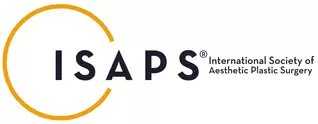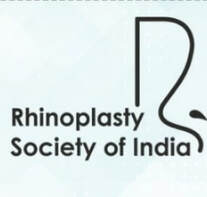|
Cosmetic breast augmentation involves placement of an implant behind the breast tissue. This helps give breasts a bigger and fuller appearance. It has been one of the most popular cosmetic surgery procedure ever since implants were first introduced in the 1960s. Breast implants are made of either saline or silicone. Modern implants are safer than they have ever been. There are many myths surrounding this procedure. Some of them are as follows:
Myth 1: They look unnatural. When appropriately sized implants are placed with proper technique they give a natural look in the overwhelming majority of patients. The implants are chosen based on desires of the patient and dimensions of the chest. They are placed through an incision in the fold under the breast or through the axilla which usually give rise to inconspicuous scars. Modern silicone implants closely mimic natural breast tissue in texture as well as feel. Myth 2: Inability to lactate. Most women who undergo implant placement through incisions placed in axilla or fold under the breast are able to breastfeed. Only when incisions are placed around the areola is there is a likelihood of transection of ducts which help in milk secretion. Myth 3: They can disease elsewhere. It has been proven through research over many years that breast implants are very safe. They do not lead to any diseases elsewhere in the body. Myth 4: They are very expensive. They are not more expensive compared to similar surgical procedures. The total cost is determined by the cost of the implant, surgical facility fees, and physician fees. Breast augmentation is an outpatient or short stay procedure. It is usually carried out under general anesthesia and takes around 2 hours to perform. Post procedure patient is prescribed medications to relieve discomfort. Patients can usually return to work after a week. Heavy exercises are avoided for 3 weeks. Patients are advised certain exercises which help settle the implant in the pocket.
Many a times I have seen my patients getting confused about the 'plastic' in plastic surgery. Doubts are expressed about techniques employed during surgery. There are also concerns about delayed complications as a result of this type of surgery.
Plastic derives from the Greek word 'plastikos', which means 'to mold'. Plastic surgery involves procedures for restoration of form and function of the body. It can also be interpreted as borrowing from Peter to pay Paul, wherein both Peter and Paul are parts of the same person. Plastic surgery involves reconstruction of various cavities and coverings of the body. Unlike other surgical specialties, it is not confined to any particular organ system. Broadly, it comprises of reconstructive and cosmetic surgery. Reconstructive surgery is the restoration of body parts which are damaged as a result of disease or trauma. It can be performed either on an emergency or elective basis. Cosmetic surgery is the improvement in the appearance of a body part which is otherwise normal in function. Procedures for facial rejuvenation and body contouring are examples of cosmetic surgery. Division into reconstructive and cosmetic becomes blurred in certain situations like facial plastic surgery.The face should have a pleasing appearance for the effective discharge of its social functions. Hence, one can say that an intervention to improve the appearance of the face also ends up with an improvement of function. |
AuthorI like to keep it simple. CategoriesArchives
June 2024
Categories |
- Home
-
Cosmetic
- Fat grafting
- Swellings and moles
- Scar revision
- Leukoderma (Melanocyte transfer)
- Hair transplant
- Facial rejuvenation procedures
- Nose job (Rhinoplasty)
- Cleft lip nose correction
- Ear (Otoplasty)
- Lip reduction
- Breast augmentation
- Breast reduction
- Tuberous breasts
- Axillary breasts
- Gynecomastia
- Liposuction
- Brachioplasty (Arm contouring)
- Abdominoplasty (Tummy tuck)
- Female genital rejuvenation
-
Reconstructive
- Contact
- Blog
- Home
-
Cosmetic
- Fat grafting
- Swellings and moles
- Scar revision
- Leukoderma (Melanocyte transfer)
- Hair transplant
- Facial rejuvenation procedures
- Nose job (Rhinoplasty)
- Cleft lip nose correction
- Ear (Otoplasty)
- Lip reduction
- Breast augmentation
- Breast reduction
- Tuberous breasts
- Axillary breasts
- Gynecomastia
- Liposuction
- Brachioplasty (Arm contouring)
- Abdominoplasty (Tummy tuck)
- Female genital rejuvenation
-
Reconstructive
- Contact
- Blog
You can leave us a comment using the contact form below.
We shall get back to you at the earliest.
We shall get back to you at the earliest.
Links
- Face procedures | Rhinoplasty, Otoplasty, Lip reduction, Fat grafting
- Body procedures | Gynecomastia , Breast reduction, Abdominoplasty, Brachioplasty, Liposuction
- Skin procedures | Scar revision, Moles, Leukoderma surgery
Let's be friends !
Follow us at Facebook and Twitter.
Follow us at Facebook and Twitter.
© 2024 Amicus Clinic (Plastic Surgery Centre, Trivandrum). All rights reserved.
 RSS Feed
RSS Feed



